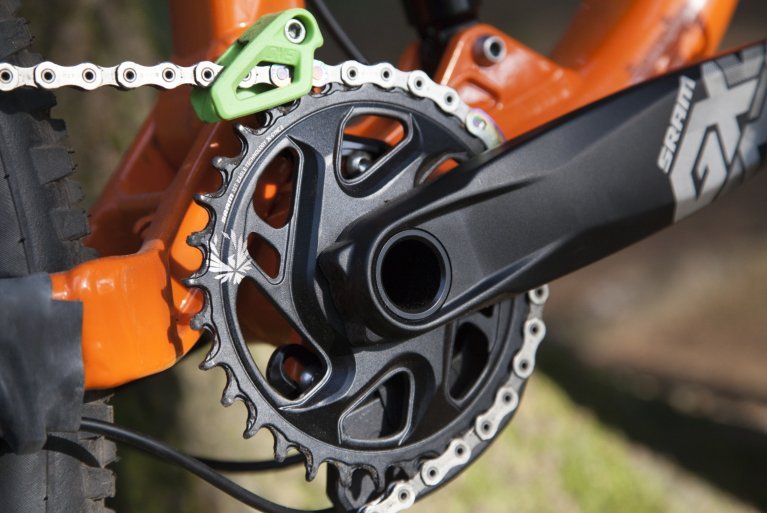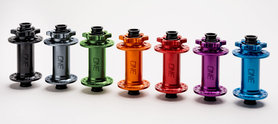
Finding the Right Chainring Size for Your Single-Speed Setup
Choosing the right chainring for your single-speed setup is crucial. We'll show you what's important so you can pedal efficiently.
It took a long time for my brother and me to find the right chainring size. I usually ride a 34 tooth ring on my Eagle drivetrain and when things get steep I switch to a 32 tooth. Robert on the other hand rides a 38 tooth every time. We are both very different riders with different needs. What type of rider are you? What factors are most important when you are choosing a chainring? Read on to get some answers.
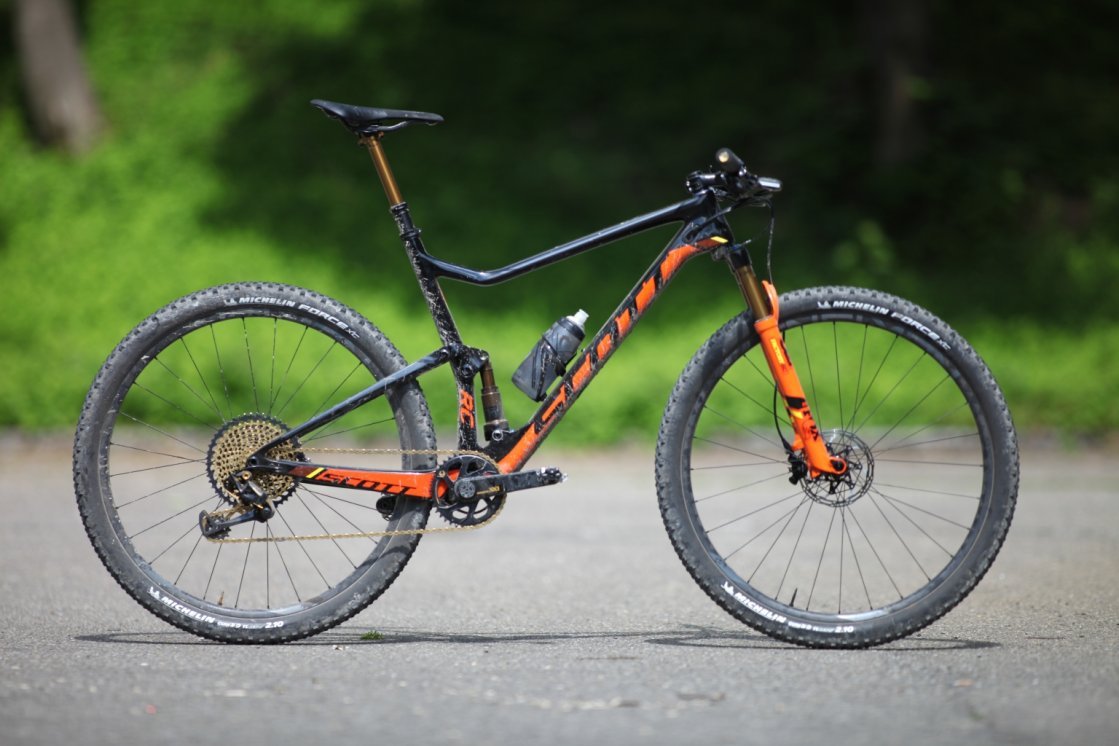
Robert’s Scott Spark with a 38t chainring
How do you decide?
1. What trails do you ride?
First things first, what type of terrain do you ride? Do you crank up long climbs or go on longer tours with a lot of altitude gain? Then a smaller chainring is definitely what you need. However, if you ride in mostly flat areas with short and steep climbs, I would recommend a larger chainring.
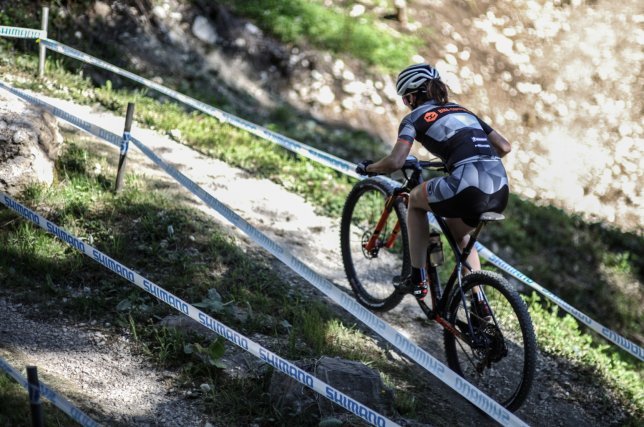
Theresia killing it uphill.
2. What kind of ratio are you riding?
When it comes to getting up hills and bombing down them, you need to know how many teeth the upper and lower sprockets of you cassette has. The table below shows you the difference in ratios between various cassettes on different sized chainrings. The lower the number the easier it is to turn the cranks. For the upper sprocket, this can mean getting up the hill easier and on the lower sprocket spinning out when riding downhill. A lot of times this decision is a compromise, so it is important to have your terrain in mind.
| 50t (Sram Eagle) | 46t (Sram, Shimano, e*thirteen) | 42t (Sram, Shimano) | 10t (all) | 9t (e*thirteen) | |
|---|---|---|---|---|---|
| 28t | 0.56 | 0.61 | 0.67 | 2.80 | 3.11 |
| 30t | 0.60 | 0.65 | 0.71 | 3.00 | 3.34 |
| 32t | 0.64 | 0.70 | 0.76 | 3.20 | 3.56 |
| 34t | 0.68 | 0.74 | 0.81 | 3.40 | 3.78 |
| 36t | 0.72 | 0.78 | 0.86 | 3.60 | 4.00 |
| 38t | 0.76 | 0.83 | 0.91 | 3.80 | 4.23 |
2.1. How does the ratio change with a larger chainring?
The table below shows how the ratios change on an Eagle cassette depending on the chainring size. Here, the larger the chainring the larger the gear jumps. This can lead to your cadence being disrupted when you can’t find the ‘right’ ratio on you cassette.
| 50 | 36 | 28 | 21 | 16 | 12 | |
|---|---|---|---|---|---|---|
| 36t | 0.72 | 1.00 | 1.29 | 1.71 | 2.25 | 3.00 |
| 32t | 0.64 | 0.89 | 1.14 | 1.52 | 2.00 | 2.67 |
| 28t | 0.56 | 0.78 | 1.00 | 1.34 | 1.75 | 2.34 |
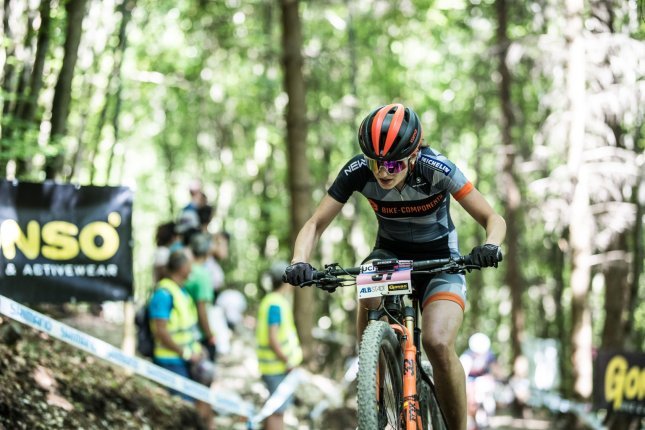
Grinding away.
3. What type of cadence do you hold? Lance Armstrong or Jan Ulrich?
Here it is important to know if you prefer to keep up a high or low cadence. Or another way to put it: do you keep your legs spinning like Lance or do you crank out the gears like Jan? If you are more the Lance type, then a smaller chainring will get you spinning the cranks like you want. But if you like pushing the big gears like Jan, go for a larger chainring.
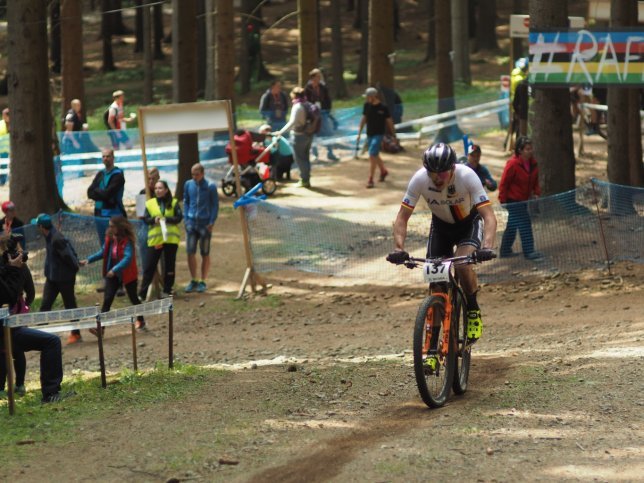
Robert taking on an uphill in Nové Mesto
What is your fitness level?
Of course, your fitness level is an important factor when it comes to chainring choice. If you don’t ride that often, but still ride in mountains / hilly terrain, I would recommend riding a smaller chainring. This keeps you pushing the same cadence as you switch gears to head up the mountain. For a long time, I thought I could ride a 34 tooth chainring on every type of trail. When I decided to test out a smaller ring, I found that I was saving tons of energy riding uphill sections because my cadence remained the same. If your have the feeling that you don’t have enough gears halfway up the mountain, you should also switch to a smaller chainring. However, when you are riding downhill and you cadence increases to out of control, you might want to consider looking into a larger chainring.
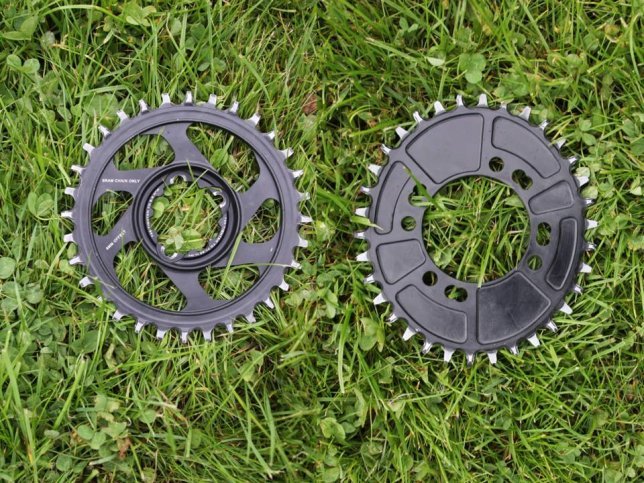
An oval chainring next to a normal one.
What is with oval chainrings?
Robert and I used to ride oval rings. We notice a huge difference compared to round ones. An oval 32 tooth chainring feels very different because the cadence is no longer round. When I was riding a 32 t oval ring, I thought I was on a 34 t. This is due to the amount of power you need to push over the longer section of the ring. As soon as there is an oval SRAM Eagle chainring on the market, we are definitely going to give it a try. Just make sure not to switch to oval before a race or longer tour. It is important to get used to them first because of how they affect your cadence.
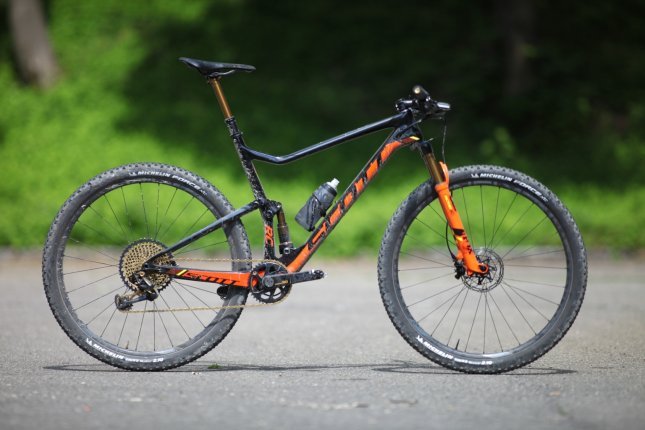
Robert’s Scott Spark with a 38t chainring
Final Thoughts
Choosing a chainring can be difficult. The best way is to try out different sizes until you find the right one for you. Knowing your cadence preference, terrain and ratio will help you make that decision before you buy, however. Don’t forget about your fitness level either and riding a smaller ring is never a bad thing. Keep in mind what you can do and stick to it!

